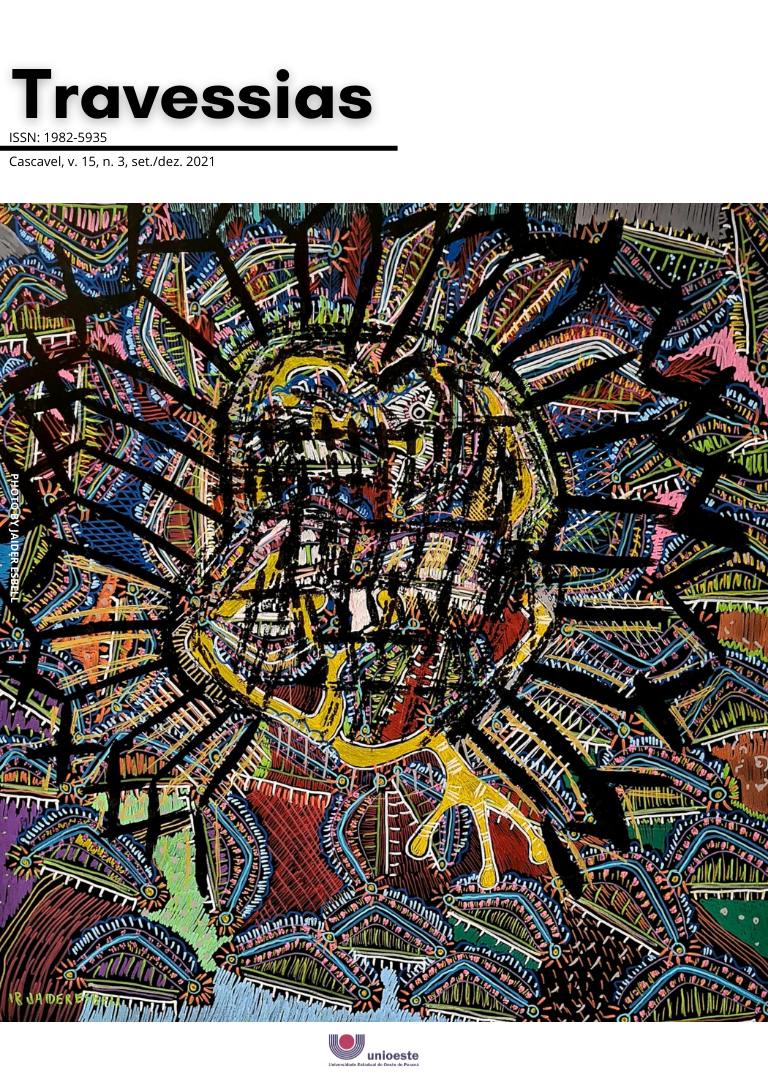Relação fala e escrita:
uma análise dos registros ortográficos em produções escritas do Ensino Fundamental
DOI:
https://doi.org/10.48075/rt.v15i3.27455Palavras-chave:
Ensino, Ortografia, LinguagemResumo
Este artigo trata da relação entre a fala e a escrita em produções escritas de estudantes do Ensino Fundamental. A atividade escrita pode levar a inseguranças devido à complexa relação entre a fala e a representação gráfica de algumas palavras. Este estudo tem o objetivo de apresentar uma análise dos registros gráficos em produções escritas de alunos do Ensino Fundamental, a partir da descrição da natureza das ocorrências de escrita que infringem as regras ortográficas. Esta pesquisa insere-se na Sociolinguística Educacional, em que as reflexões partem dos estudos sobre variação linguística, escrita e ortografia realizados por Faraco (1994), Leal e Roazzi (2007), Morais (2007) (2009), Costa (2016), entre outros autores. Os dados analisados foram coletados em produções escritas desenvolvidas por alunos do 3º ano do Ensino Fundamental, visto que é nesse período que os estudantes têm os primeiros contatos com a ortografia da Língua Portuguesa. Observamos que os estudantes possuem dificuldades nas formas heterogêneas da língua, ou seja, no princípio de arbitrariedade que compõe a ortografia. Dessa forma, os dados reiteram que os índices de maior representatividade de desvios ortográficos são originários da influência da fala dos estudantes sobre a modalidade escrita, portanto, gerados devido à natureza fonético-fonológica.
Downloads
Referências
ASH, Russell.; HIGTON, Bernard. (compilação). Fábulas de Esopo. Tradução: Heloisa Jahn. São Paulo: Cia das Letrinhas, 1994.
BUSSE, Sanimar. Variação linguística e ensino: os desafios do ensino em Língua Portuguesa. In: COSTA-HÜBES, Terezinha da Conceição (org.). Práticas sociais da linguagem: reflexões sobre oralidade, leitura e escrita no ensino. Campinas: Mercado das Letras, 2015.
COSTA, Antônio Joel da Silva. Escrita ortográfica: proposta de intervenção para o ensino fundamental II. 2016. 169 f. Dissertação (Mestrado) - Mestrado Profissional em Letras em Rede Nacional – PROFLETRAS. Universidade Federal do Rio Grande do Norte – UFRN, Currais Novos.
FARACO, Carlos Alberto. Escrita e alfabetização. 2. ed. São Paulo: Contexto, 1994.
FERREIRA, Adriana Alexandra; BUSSE, Sanimar. Processos fonológicos e escrita ortográfica em produções textuais do ensino fundamental. Domínios de Lingu@gem, v. 13, p. 234-256, 2019.
FLICK, Uwe. Introdução à pesquisa qualitativa. 3. ed. Porto Alegre: Artmed, 2009.
LEAL, Telma Ferraz; ROAZZI, Antonio. A criança pensa... e aprende ortografia. In: MORAIS, Arthur Gomes de (org.). O aprendizado da ortografia. 3. ed. Belo Horizonte: Autêntica, 2007.
MORAIS, Arthur Gomes de. Ortografia: este peculiar objeto de conhecimento. In: MORAIS, Arthur Gomes de. (org.). O aprendizado da ortografia. 3. ed. Belo Horizonte: Autêntica, 2007.
MORAIS, Arthur Gomes de. Ortografia: ensinar e aprender. 5. ed. São Paulo: Ática, 2009.
OLIVEIRA, Marco Antônio de. Conhecimento linguístico e apropriação do sistema de escrita: caderno do formador. Belo Horizonte: Ceale/FaE/UFMG, 2005.
POLLO, Tatiana. Conhecimento da Língua: Fonologia e Ortografia do Português do Brasil. In: ALÇADA, I. et al. Alfabetização Baseada na Ciência: Manual do Curso ABC. Brasília: Ministério da Educação (MEC); Coordenação de Aperfeiçoamento de Pessoal de Nível Superior (Capes), 2021.
Downloads
Publicado
Como Citar
Edição
Seção
Licença
Copyright (c) 2021 Autores mantêm os direitos autorais e concedem à revista o direito de primeira publicação, com o trabalho simultaneamente licenciado sob CC-BY-NC-SA 4.0 que permite o compartilhamento do trabalho com indicação da autoria e publicação inicial nesta revista

Este trabalho está licenciado sob uma licença Creative Commons Attribution-NonCommercial-ShareAlike 4.0 International License.
Aviso de Direito Autoral Creative Commons
Política para Periódicos de Acesso Livre
Autores que publicam nesta revista concordam com os seguintes termos:
1. Autores mantêm os direitos autorais e concedem à revista o direito de primeira publicação, com o trabalho simultaneamente licenciado sob a Licença Creative Commons Attribution que permite o compartilhamento do trabalho com reconhecimento da autoria e publicação inicial nesta revista.
2. Autores têm autorização para assumir contratos adicionais separadamente, para distribuição não-exclusiva da versão do trabalho publicada nesta revista (ex.: publicar em repositório institucional ou como capítulo de livro), com reconhecimento de autoria e publicação inicial nesta revista.
3. Autores têm permissão e são estimulados a publicar e distribuir seu trabalho online (ex.: em repositórios institucionais ou na sua página pessoal) a qualquer ponto antes ou durante o processo editorial, já que isso pode gerar alterações produtivas, bem como aumentar o impacto e a citação do trabalho publicado (Veja O Efeito do Acesso Livre).
Licença Creative Commons
Esta obra está licenciada com uma Licença Creative Commons Atribuição-NãoComercial-CompartilhaIgual 4.0 Internacional, o que permite compartilhar, copiar, distribuir, exibir, reproduzir, a totalidade ou partes desde que não tenha objetivo comercial e sejam citados os autores e a fonte.



